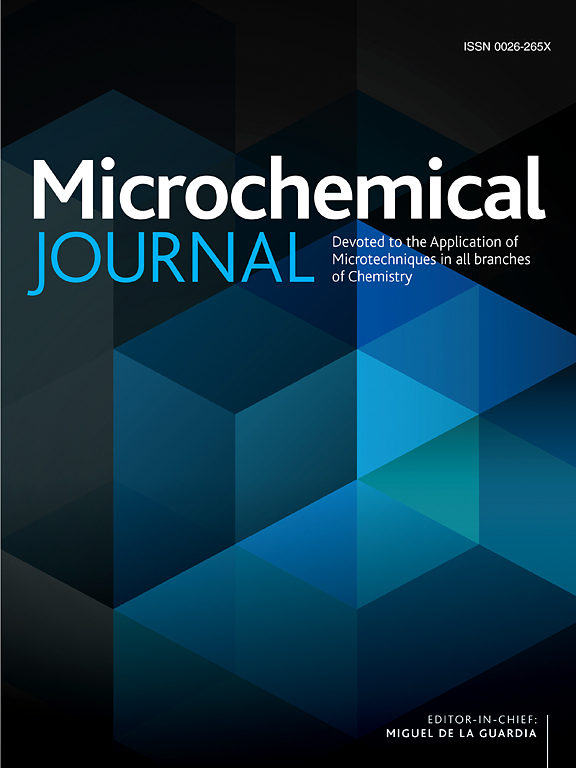The effect of energy modality on tissue identification from surgical smoke by differential ion mobility spectrometry
IF 4.9
2区 化学
Q1 CHEMISTRY, ANALYTICAL
引用次数: 0
Abstract
Surgical smoke analysis offers a way to provide assisting information to the surgeon intraoperatively, which can be potentially used to assess cancer tumor margins in surgical oncology and alert the operator of accidental organ injuries caused by electrosurgical (ES) instruments. Surgical smoke content is affected by the energy instrument it is produced by. Classification of surgical smoke by differential ion mobility spectrometry (DMS) was evaluated with 6 porcine tissue types and 5 energy instruments. Instruments consisted of mono- and bipolar instruments, ultrasonic shears and a –blade. Machine learning was used to classify tissues by training binary classifier linear discriminant analysis (LDA) to distinguish a marked tissue class from the rest. The greatest binary classification accuracies were obtained with the monopolar instruments and the lowest with the bipolar instrument, 93.5 % and 77.5 % respectively. The analysis of surgical smoke with DMS is possible with a variety of energy instruments, however with varying performance. This implies that DMS based tissue identification is generalizable across different surgical instruments and surgical specialties.

能量模式对差分离子迁移谱法识别手术烟雾中组织的影响
手术烟雾分析提供了一种在术中向外科医生提供辅助信息的方法,可用于评估肿瘤外科手术中的肿瘤边缘,并提醒操作者注意电外科(ES)器械造成的意外器官损伤。手术烟雾的含量受其产生的能量仪器的影响。通过差分离子迁移谱法(DMS)对 6 种猪组织类型和 5 种能量仪器进行了手术烟雾分类评估。仪器包括单极和双极仪器、超声波剪和刀片。通过训练二元分类器线性判别分析 (LDA),使用机器学习对组织进行分类,以区分有标记的组织类别和其他类别。单极器械的二元分类准确率最高,双极器械最低,分别为 93.5 % 和 77.5 %。使用 DMS 分析手术烟雾可以使用多种能量仪器,但性能各不相同。这意味着基于 DMS 的组织识别可适用于不同的手术器械和手术专业。
本文章由计算机程序翻译,如有差异,请以英文原文为准。
求助全文
约1分钟内获得全文
求助全文
来源期刊

Microchemical Journal
化学-分析化学
CiteScore
8.70
自引率
8.30%
发文量
1131
审稿时长
1.9 months
期刊介绍:
The Microchemical Journal is a peer reviewed journal devoted to all aspects and phases of analytical chemistry and chemical analysis. The Microchemical Journal publishes articles which are at the forefront of modern analytical chemistry and cover innovations in the techniques to the finest possible limits. This includes fundamental aspects, instrumentation, new developments, innovative and novel methods and applications including environmental and clinical field.
Traditional classical analytical methods such as spectrophotometry and titrimetry as well as established instrumentation methods such as flame and graphite furnace atomic absorption spectrometry, gas chromatography, and modified glassy or carbon electrode electrochemical methods will be considered, provided they show significant improvements and novelty compared to the established methods.
 求助内容:
求助内容: 应助结果提醒方式:
应助结果提醒方式:


